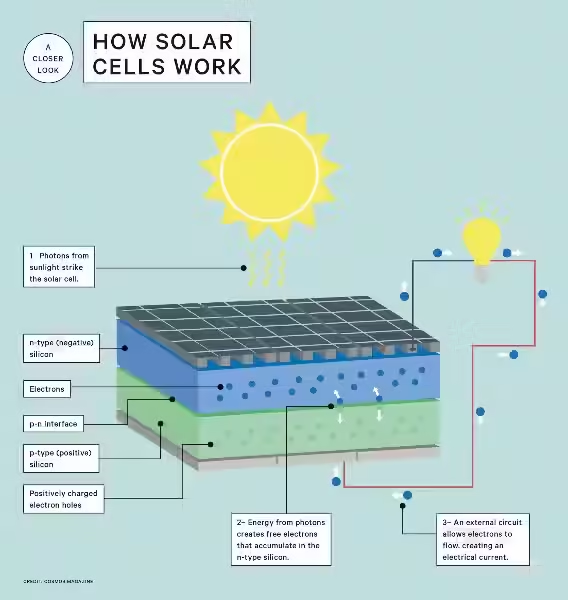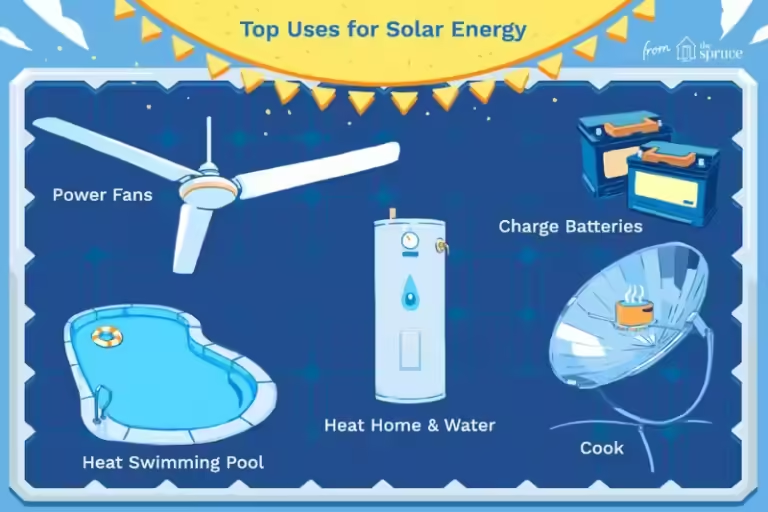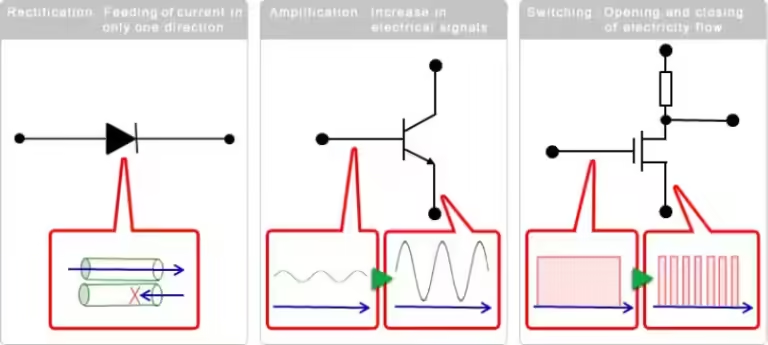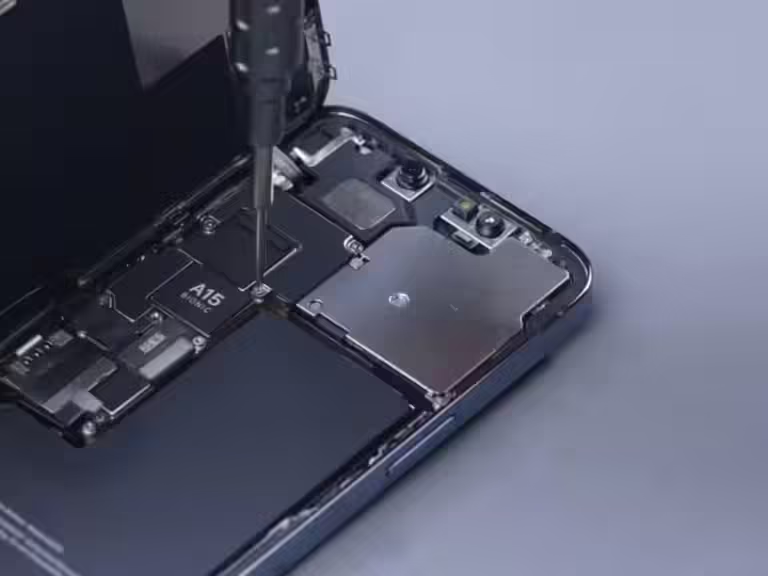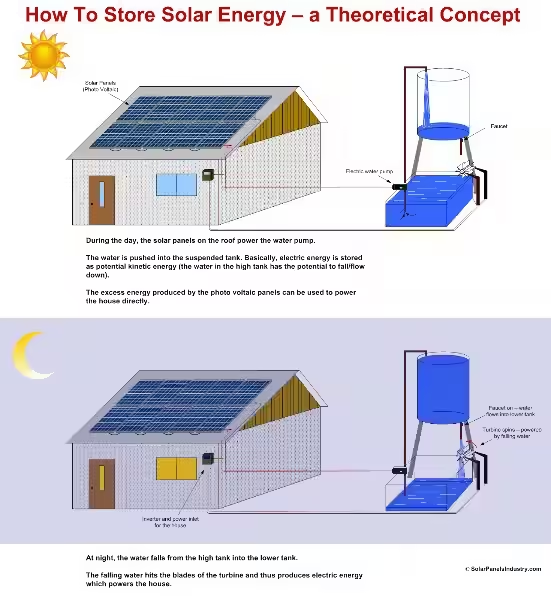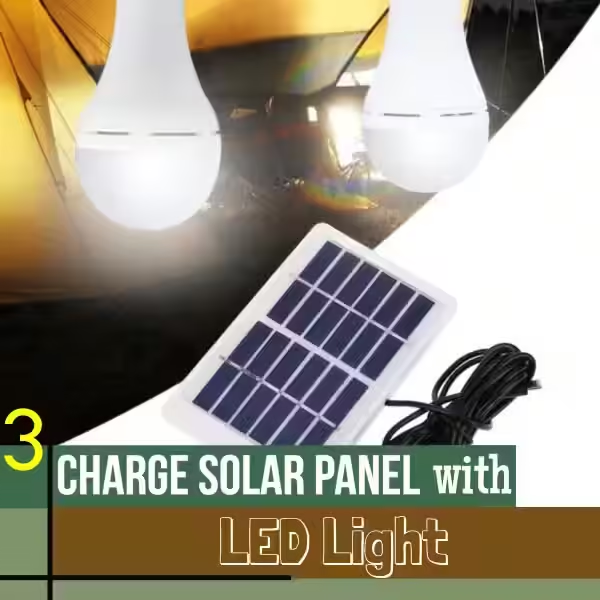The Magic of Sunlight: How Solar Cells Generate a Potential Difference
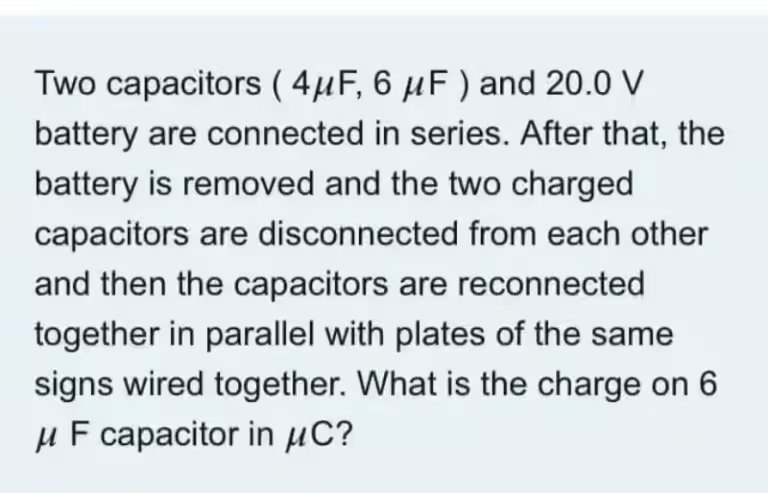
Imagine a world powered by the sun. It's no longer a futuristic fantasy but a reality being built brick by brick, with solar cells at the heart of this revolution. But how do these tiny devices, often found on rooftops or in calculators, actually transform sunlight into electricity? It all comes down to a fascinating phenomenon: a solar cell generates a potential difference.
The Heart of the Matter: The p-n Junction
At the core of every solar cell lies a key component: the p-n junction. This is where two types of semiconductor materials, p-type and n-type, meet. Think of them as opposite ends of a magnet, creating a unique interaction.
P-Type: A Sea of Holes
A p-type semiconductor has a surplus of "holes," which are essentially empty spaces where electrons should be. These holes act as positive charge carriers, free to move around within the material.
N-Type: Abundant Electrons
On the other hand, an n-type semiconductor has an excess of electrons, the negatively charged particles that orbit atoms. These electrons are also free to move within the material.
The Depletion Zone: A Barrier to Flow
When the p-type and n-type materials touch, a fascinating phenomenon occurs. Electrons from the n-type start to diffuse into the p-type, filling some of the holes. Simultaneously, holes from the p-type move into the n-type, leaving behind empty spaces. This creates a depletion zone at the junction, where there are very few free charge carriers.
The depletion zone acts as a barrier, preventing the further flow of electrons and holes across the junction. This barrier is essential for creating the potential difference that powers the solar cell.
Sunlight’s Role: Energizing the Electrons
The sun's rays, composed of tiny packets of energy called photons, play a crucial role in the solar cell's operation. When a photon strikes an electron in the semiconductor, it can transfer its energy to the electron. If the photon has enough energy, it can excite the electron, boosting it to a higher energy level.
This excited electron is no longer bound to its atom and can move freely within the material. This process, called photoexcitation, generates both electrons and holes, increasing the number of free charge carriers in the semiconductor.
The Resistor’s Role: Completing the Circuit
The generated electrons and holes, driven by the internal electric field within the depletion zone, naturally want to move towards their respective terminals. But without an external path, this movement is limited. This is where the resistor comes in.
A resistor is like a traffic signal for electrons. It provides a path for the free electrons and holes to flow, forming an electric current. However, the resistor's resistance limits the flow of current, creating a potential difference (voltage) across the solar cell terminals.
The Result: Turning Sunlight into Electricity
The combination of current flowing through the resistor and the voltage across the solar cell terminals is what we call power generation. The amount of power generated depends on several factors, including the intensity of sunlight, the size of the solar cell, and the resistance of the resistor.
Key Takeaways: Simplifying the Process
- Solar cells generate a potential difference (voltage) due to the flow of charge carriers created by sunlight.
- The p-n junction and its depletion zone are crucial in driving the flow of charge carriers.
- Sunlight excites electrons, creating free charge carriers.
- A resistor completes the circuit, allowing charge carriers to flow.
- The resistor's resistance limits the current, leading to a voltage drop.
- The combined effect of current and voltage results in power generation.
The Future of Solar Energy: A Bright Outlook
The story of how a solar cell generates a potential difference is a testament to the ingenuity of science. By understanding the intricate interplay of these components, we can unlock the power of the sun and build a more sustainable future. This technology is not just about generating electricity; it's about harnessing the power of nature to create a world powered by clean energy.
Frequently Asked Questions
How does a solar cell generate a potential difference?
A solar cell generates a potential difference due to the flow of charge carriers created by sunlight. It utilizes a p-n junction, where two semiconductor materials with different conductivity levels meet, with one having an excess of holes (positive charge carriers) and the other having an excess of electrons (negative charge carriers). When sunlight strikes the solar cell, it excites electrons, generating free charge carriers. The internal electric field created by the p-n junction drives these charge carriers towards their respective terminals, creating a flow of charge - or electric current. The amount of potential difference depends on the intensity of sunlight, the size of the solar cell, and the resistance of the resistor connected to it.
What is the role of the resistor in a solar cell circuit?
The resistor in a solar cell circuit provides a path for the free electrons and holes to flow, completing the circuit. It limits the current flow, creating a potential difference (voltage) across the solar cell terminals.
How does the resistance of the resistor affect the voltage generated?
The resistance of the resistor directly affects the voltage generated by the solar cell. A higher resistance limits the flow of current, resulting in a higher voltage across the solar cell terminals. Conversely, a lower resistance allows more current flow, leading to a lower voltage.
Why is a resistor necessary for a solar cell to produce power?
A resistor is necessary for a solar cell to produce power because it completes the circuit, allowing the flow of charge carriers, which is essential for generating a current. The resistor also helps regulate the current flow, optimizing the power output of the solar cell.
What factors affect the efficiency of a solar cell?
The efficiency of a solar cell is influenced by several factors, including the intensity of sunlight, the size of the solar cell, the material used in the p-n junction, and the resistance of the load. The efficiency can be defined as the ratio of the power generated by the cell to the power received from the sunlight.

